Resources
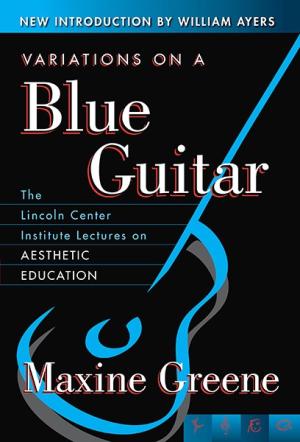
This book is a collection of lectures given by Maxine Greene over a period of twenty-five years. Greene, who passed away in 2014, was an outstanding example of the integration of scholarship and the arts, aesthetic education and social thought. As such, this book is for all those who are interested in education and who seek to make their classrooms energetic, immediate, and alive with imagination and critique (vii-viii). It is a book for any educator in any discipline who seeks to embody transformative classroom experiences for their students. Variations on a Blue Guitar’s introduction and preliminary material familiarizes readers with Greene’s work and her role in the Lincoln Center Institute for the Arts in Education at Columbia University. The book is divided into five sections. The first introduces the reader to aesthetic education. Greene believes that aesthetic education creates different modalities of expression that result in new ways of doing education in the classroom. For Greene, engaging art in education elicits “fresh connections, unsuspected meanings, and. . . continuing discovery” (42). The second section works through the experience of the imagination and its implications in the classroom. One of the goals of education using art is to suggest alternative realities for the material being discussed. Greene describes concrete, purposeful, and evocative experiences with art. However, she also gives concrete examples of how one can live these experiences in moments of awareness in the natural world (72). Furthermore, she uses examples from literature, visual art, and even the natural world of these moments of awareness where an awakening occurs and one has a new field of perception of reality. The third section of the book moves from these experiences to the concrete classroom. Greene advocates for including art in active learning, critical questioning, narrative, meaning-making, authentic assessment, collaboration, and community (146). She champions the arts in a world that is increasingly technological and dependent on the internet and computers; some experiences can only be rendered through the arts (172). This emphasis on the arts does not ignore excellence and standards. In fact, art improves classroom standards that appeal to traditional banking models of education. In the fourth section of this book, Greene describes how minorities are a rich source of creativity and thinking outside the box. Education should strive not to rule others and furthermore it should not classify minorities or put them in hierarchies to silence them (198). Greene’s endeavor to give dignity to often silenced voices is a strength of this book. She states, “[T]he cruelest thing we can do. . . is to categorize young people. . . whether we call it ‘Asian,’ ‘Hispanic,’ ‘African American’” (152). Overall, this book is beneficial as Greene pushes the reader beyond conventional means of education. It is a helpful resource for teachers in all fields of the discipline as they discover new dimensions of themselves and their pedagogy.
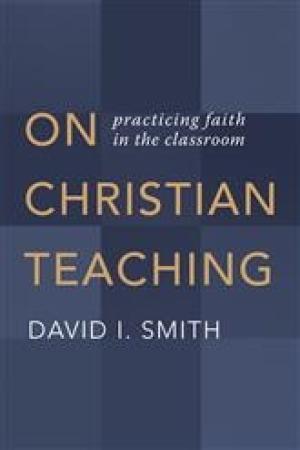
What is expressly Christian about teaching in a Christian context? In this assessment of the state of Protestant Christian pedagogy and constructive vision for its improvement, Smith addresses a gap he perceives between the aspirations and actual practices of Christian teaching. Teaching in Christian contexts cannot be reduced to issues of content or philosophy; it requires intentionality of process. Smith’s laser focus on Christian pedagogy distinguishes his approach from other treatments of Christian teaching that emphasize the spirituality of the educator, such Parker Palmer’s work. On Christian Teaching resides within the practices stream of theological education, consistent with Smith’s other work including Teaching and Christian Practices, which he co-authored with James K. A. Smith. After laying out an extensive argument for how the integration of faith and education must attend to pedagogy, Smith engages the What If Learning approach (http://www.whatiflearning.com/) developed in conjunction with the Kuyers Institute for Christian Teaching and Learning, which he directs at Calvin College. Here the reader is invited to envision possibilities for seeing anew through a shared imagination between teacher and students, enabling students to choose meaningful engagement, and reshaping practice through attention to space and time. Surprisingly, however, Smith does not engage the important work already published by scholars of color on some of the very topics of his chapters, such as Willie James Jennings’ The Christian Imagination or bell hooks’ Teaching series. The reader would do well to engage Smith’s book alongside such other resources on imagination and pedagogy. Smith guides Christian educators in assessing the pedagogical home they create, an environment that forms students in particular practices and assumptions. He continually pushes readers to go beyond philosophy and content to wrestle with the implicit meanings their teaching practices may convey, privileging student perceptions of the classroom experience over the teacher’s intentions. From start to finish, Smith consistently grounds his book in the actual experiences of teaching. Examples from a wide variety of classroom settings abound: anecdotes relayed by his son at a Christian high school, Smith’s own experiences teaching language classes at the high school and university levels, and an array of stories received from colleagues and students. If Smith’s leadership of the Kuyers Institute is not enough to convince the reader to pay attention, the organic way he articulates his message amid such a diversity of classroom examples gives the reader a sense that Smith is indeed a master teacher, and that something significant can be learned from him. The title of the book indicates two of its limitations: it expressly addresses Christian teachers and institutional settings, and is focused on the four-walled institutional classroom setting. A third limitation is its one-directional movement from theology to practice that carries a hint of applied theology, “that faith can inform pedagogy” (viii). The reader must therefore raise two important questions alongside this book: Is the traditional classroom the best setting in which to enact Christian teaching? And, in what ways might the pedagogy in which we were formed already have shaped our theology? On Christian Teaching is written for educators across all disciplines who identify as Christian, especially those at Christian secondary and higher education institutions. It contains eleven manageable chapters of approximately fifteen pages in length, each with a journaling prompt and questions for reflection and discussion that facilitate reflection on one’s current practice of teaching and guide imagination for future practice. This structure makes the book ideal for reading among a group of educators who are ready to move beyond the questions of what and why they teach, to imagine the how of Christian teaching.
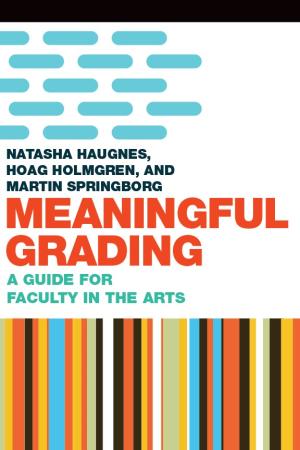
Meaningful Grading: A Guide for Faculty in the Arts provides a framework for continual improvement and deliberate practice in the area of course design, assignment creation, and assessment. Although this book focuses on faculty in the arts, its wisdom is accessible to all faculty in higher education. The authors argue that “strong teaching requires careful planning, even though the time constraints of academe do not always allow for it” (2). Therefore this book is comprised of fifty tips that can stand alone and/or work together to provide a cohesive pedagogical framework. Meaningful Grading is divided into three parts: (1) course design and preparation, (2) during the semester, and (3) post semester. The book begins by challenging the reader to examine their own beliefs and biases, know their educational context, and define what success will look like in their course (6-7). As I read this section, I was reminded that many faculty in higher education receive little to no training in pedagogy and course design. Haugnes, Holmgren, and Springborg argue that we must be intentional in our course design and that “grading, if it is to be meaningful to students, must be intentionally integrated into the whole course” (30). The authors focus heavily on ensuring that course goals, teaching and learning activities, and assessment (evidence of success) must work together to support student learning. The course design process is iterative and one will cycle through “all the legs of the tripod multiple times. . . until each is in alignment to help support deep learning” (33). Part two presents a series of tips that operate as “grab and go ideas in the middle of the semester” (65). This section provides advice on how to clearly communicate the goals and expectations that were crafted in part one. It also focuses on how to teach discrete skills and content as well as how to emphasize process over perfection. The authors suggest that it is important to identify what success looks like at multiple distinct points in the process in order to provide students with more meaningful feedback along the way. In addition, it is through the intentional use of field specific language in all communication with students (syllabus, critiques, meaningful feedback, and comments) that students are exposed to and are able to absorb field specific language and concepts. Finally, part three provides advice on how to engage in reflection on a completed semester in order to establish and improve meaningful grading practices. The first tip in this section encourages faculty to seek feedback from students and faculty colleagues during and after the semester in order to become a more effective grader. Although this feedback can include end-of-semester evaluations, the instructor is encouraged to seek additional and separate forms of feedback from students about fairness of grades, use of rubrics, and other course activities. The instructor is also encouraged to return to course goals and course activities to assess if goals were met and the process of grading was useful for both the instructor and the students. As a faculty member who is not in the arts (design, architecture, fine and visual arts, media arts, literary arts, printmaking, performance arts, etc.) but utilizes various forms of art in my lectures, course activities, and graded assignments, I found this text to be very helpful in expanding my knowledge of how to better incorporate and assess the use of art in a learning context where students may not initially see or value the ways in which art speaks to the content at hand. It also provided me a strong foundation on how to better communicate to students the ways in which what they are learning to master is a form of artistry. This book provides practical and accessible advice on how to design and execute a course in any discipline in higher education while simultaneously speaking to the unique nature of assessment in the arts. I believe it is an important read for all faculty regardless of discipline and experience level, and trust that it will help us more critically examine our pedagogical strategies and assessment methodologies.
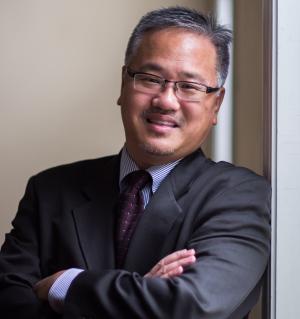
We live in exciting times. Even just 10 years ago, the technology to teach the kind of online course that I would dream about was simply unavailable. But not anymore. Today the technical tools needed to teach a course can scale the heights of one’s imagination. They are not only available, but affordable for instructors. In this post, I want to geek out over tech tools, especially as they relate to the online Beginning Greek class I am teaching this academic year. Unicode language keyboards If students are going to learn a language online, they need a no-hassle way of easily typing its alphabet. I am currently teaching on Canvas but what I say here would apply to Sakai, Blackboard, Moodle, or any other learning management system (LMS). The best keyboard available for most languages is Keyman (latest version 10.0; for Greek, pick the Greek Classical keyboard). It uses unicode (or ‘universal encoding’), which means that the keyboardist no longer has to worry about what fonts are installed on a given computer. In any font, when you type in Greek or another selected language, the output is consistent. The Greek classical keyboard is especially well-designed, complete with a tutorial and keyboard layout visual. It is available for Windows, macOS, the iPhone, iPad, and Android interfaces, and best yet, it is free. There is even a nice selection of ancient Hebrew keyboard options. Video production and encoding As I suggested in my previous blog, the language instructor ultimately needs to create personal instructional videos. I produced over 80 of them (7-10 minutes each) to cover the content of Greek 1 and 2 (two semesters). I quickly discovered that a microphone is more important than a video camera. Audio quality is more important than video quality. Since many universities now require captions with videos, the better the sound, the more accurate are the automated subtitle scripts produced by YouTube and other caption services. I find that I did far less editing of the subtitle scripts when my microphone and sound quality improved. Here’s my advice: invest in a high quality microphone, save on cheaper video cameras. I particularly like the Yeti USB Microphone ($128.73) for my laptop, but if one is recording off a tablet or phone, the Boya 3.5mm Microphone ($19.95) is excellent for shutting out background noise. But built-in microphones on your computer and phones are the worst. To avoid echoes and the way-off-in-the-distance muffled sound these produce, get a good microphone. Some decent video cam’s include: the Logitech 930 series ($68.00), or simply use your tablet or smartphone camera. Once the video is produced, the course designer will need a good editor and encoder. I always want something simple and easy-to-use. Screencast-o-matic is excellent for cutting out video I don’t like. I can insert slides, text, photos, and even external video if I wish. It is a subscription service ($36 for 3 years or $1/month) and well worth it to save much grief for the less technically savvy person (myself included). It also encodes the video for easy upload onto YouTube, Vimeo, or other video channel sites. Headset for video conferencing and synchronous teaching It just takes one. Just one computer with bad feedback on its sound system and the entire video conferencing session is a disaster. Whether using Zoom, Big Blue Button, Skype, or other conferencing tools, getting a headset with microphone and asking your students to buy it are crucial to eliminate screeching distractions. Especially if one meets with a small group tutorial session online, or even a large synchronous classroom setting, having everyone log into the session with a headset will allow all to be heard without nasty feedback or echoes. My recommendation (and it’s cheap) is the Mpow USB headset/microphone ($22.99). I would add the headset as part of the textbook order. Recommended OER’s Lastly, there are many free open educational resources (OERs, pronounced “oars”). I was surprised to find many good Greek tools online. The United Bible Society, for example, has the entire UBS5 Greek New Testament available for public use. Greek professors often post their own videos and other resources to help students (here’s a fantastic one called Daily Dose of Greek). The Perseus project has a parsing engine online for New Testament and other Greco-Roman texts. There is an exciting world of free OERs ready to be employed by the innovative course designer. The tough part is choosing which ones to use, but that is a welcome problem to tackle.
[row] [column lg="4" md="4" sm="12" xs="12" ] [su_button url="https://www.wabashcenter.wabash.edu/programs/aar-sbl-2018/" background="#86b53e" size="3" wide="yes" center="yes" radius="5" text_shadow="0px 0px 0px #FFF" desc="Workshops, sessions, reception, etc..."]Full List of Events and Activities[/su_button] [/column] [column lg="4" md="4" sm="12" xs="12" ] [well] "Wabash Center Lounge" Come by and visit us when we’re not in session. [/well] [/column] [column lg="4" md="4" sm="12" xs="12" ] [/column][/row]
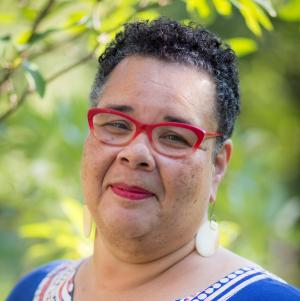
“Doc, if I teach what you are talking about I’ll get fired!” “Talking about this in seminary is fine, but if I try to talk about white supremacy on my job –won’t I get fired?” “If I talk about racism and oppression in my church-I’ll get fired.” In classroom conversations that teach against domination, systemic hatred, violence, and social dehumanization, students begin to consider what it might be like to take these agendas to the places where they have leadership responsibility, authority, and obligation. Students become concerned about what might be at stake should they take up the lofty ideals of equity, liberation, and social holiness. The concern for personal risk is not pervasive, but it is certainly a concern which is voiced. Once students learn a bit about employing liberative pedagogies they become concerned about employment stability, the consequences of moral agency, and the backlash of courageous acts. Students feel inspired, intrigued, and curious about new approaches to the sins of xenophobia, white nationalism, racism, misogyny, Islamophobia, and homophobia, only to be halted by the personal fear of communal rejection, the possibility of shunning, and the chance that they will get fired. After reading great thinkers like bell hooks, Paulo Freire, Katie G. Cannon, Parker Palmer, and Audre Lorde, students lean into the conversation of social transformation and church accountability. They “try-on” the ideas of liberation and the hope of systemic equity for minoritized, economically disenfranchised, and those seeking asylum. There is a thrill to these taboo and previously unconsidered notions of good community and spiritual maturity. Quickly though, too quickly, the thrill meanders into, or slams into, the reality of being a neophyte leader in an established system. Their questions wither into concerns of self-preservation and selfishness–“If I try to do this stuff, will I get fired?” Critical, prophetic wisdom shrivels. Rather than bringing ease, deep study plunges the student into discomfort, dilemma, and the promise of hardship, sacrifice, and possible loss of power, authority, and social stature. In asking if they will get fired, I do not believe my students are having a crisis of conscience–their conscience is clear. They say they want liberation for all persons–and I believe them. Their dilemma is in falling victim to selfishness and the illusion of security. They are afraid that if they lead people toward change, and teach toward an ethic of compassion, love, empathy, and mercy, that this will be such a drastic shift away from the current norm of white supremacy and patriarchy that they will be punished. These genuine concerns must be considered in the seminary classroom if learning about justice is to be real and realized. On the days I am impatient with their self-centered concerns, my answer to their genuine, albeit uninspired, concern is to quote science fiction writer Octavia Butler, “So be it. See to it.” With this statement I am not so much trying to be callous as I am trying to portray what my grandmother told me: “We do not fight flesh and blood, but powers and principalities.” What she meant was that we are obligated to speak our truth then trust in the Spirit who would see us through the fight; our truth and trust must be in God. This is a hard lesson which sometimes takes a lifetime. My grandmother would also import Emily Dickinson’s advice to “tell the truth but tell it slant,” her version of “.. . be wise as serpents and innocent as doves” (Matthew 10:16). When I am more patient, I linger over the question of self-preservation. I carefully explain that the work of teaching to transgress, if done effectively, will likely result at some point in life with the loss of favor, friends, reputation, money, and yes, might result in getting fired. I want my students, even the young ones, to have more fear of the harm and violence of living in a racist society than fear of personal sacrifice. I want them to fear being unfaithful to what they say they care about and believe. I want their fear to motivate them rather than paralyze them. When I ask the student who had the courage to voice their fear of being fired why they would want to lead a congregation or institution who would suppress their impulse to fight against the status quo, I am asking why would they want to squander the gifts they offer for the needs of the world to a people who are uninterested in, or unmoved by, the suffering of the world. Heretofore, my students have heard this as a rhetorical inquiry and no one has responded to this query – not yet. I tell them that failure (like getting fired) is likely one of the better learning opportunities in the teaching journey. Surely, few of us have the wherewithal to prescribe failure or to sabotage our own career, even for justice work. However, when the surprise of failure finds us, we must know this likely signals new opportunity, new fulfillment, the chance for deeper contemplation about the meanness of the world and our role of leadership. Some of my most creative teaching episodes have come from my failures. I must remember to tell my students more stories of when I have failed, what I learned and, most important, point to the fact that I have lived to tell about it. Failure, even when deadly, has not as yet meant my demise. We tell students to live the question – or at least I do. But, they must live the deeper questions and not the shallow ones. If their best reflection question is “Suppose I get fired?” then this narcissistic inquiry will embolden the status quo. Shallow reflexive questions will only serve to undergird mediocrity and leave domination unchecked. Living the big questions of life means, in the 21st century, coming to grips with the fact that there is “no place to escape the diversity of the human community” (P. Palmer). Our pursuit of the deep questions in the public view of teaching will help other people to do things they really want to do, but are too afraid to do by themselves. People want to be good neighbors, want to welcome the stranger, want to live in harmony with dignity, respect and peace. Our job, as learned people, is to provide them with excuses, rationales, and ways to honor these virtues of justice. Those of us who are privileged to have studied cannot retreat into small menial jobs of maintaining the status quo or regress into living quiet lives of desperation hoping to be rescued by the leadership of someone else. Those of us who are educated must take up the big, big, big jobs of life like teaching justice, spreading mercy, and modeling love. We must refuse to be seduced by shallow subsistence which promises a paycheck. Our job of justice is to enunciate so clearly that truth is unmistakable–the truth that there are no inferior people. This enunciation will likely get all of us fired.

journal Issue

One of my favorite movies growing up was the The Sound of Music. I loved—and still love—the opening scene: the vast panoramic of Julie Andrews, arms outstretched, as Maria, belting at the top of her lungs: “The hills are alive with the sound of music!” Each song and every word from the film is etched in my memory!Perhaps you, too, can recall the scene where Maria teaches the children to sing: “Let’s start at the very beginning; a very good place to start. When you read you begin with A-B-C. When you sing you begin with Do-Re-Mi, Do-Re-Mi. The first three notes just happen to be Do-Re-Mi, Do-Re-Mi, Do-Re-Mi-Fa-So-La-Te-Do!” By the end of the film, the whole family has mastered the art of singing and it leads, literally, to their freedom.Mastery comes with a solid foundation and practice; with learning the basics, making mistakes, asking questions and correcting course. Mastery requires starting at the beginning—so that a certain freedom can surface once the basics are etched in our memories—even when learning online. As teachers, we need to provide an opportunity for students to master the basics not only of content, but also of the learning environment; to develop the thought and muscle memory of working with technology. Only then can they set aside the concern of technology and truly enter into the freedom and joy of the online learning environment.The greatest support I find for students in effective online teaching is to create a “Getting Started” module for every course I build. The language and idea of “Getting Started” is owed to the training module I completed with Quality Matters (https://www.qualitymatters.org/). I keep this language because it invites engagement with the full range of students, from neophyte to novice to expert in the online learning environment. All students are invited to review the basics. Some can be skimmed over; others perhaps not. The point is: there are many notes in this environment which need to become second nature and I teach them here.A typical table of contents for such a module contains the following foundational elements: (Do) How to upload your picture to your account, (Re) How to forward school email to your personal email account, (Mi) A tour of the course site, (Fa) How to post an original thread and respond to peers in a discussion forum, (So) How to access privatized videos, (La) How to create a video using PowerPoint or Zoom, (Te) How to submit and retrieve assignments, (Do) How to access the library e-reserves and more. These foundational elements are delivered primarily via videos and PDF documents using screen images highlighted with step-by-step instructions.These supports are made available the week before class begins and remain accessible for the entirety of the course. Students are encouraged to explore this module prior to the beginning of class to learn the A-B-Cs and Do-Re-Mis of the learning environment. I also provide an opportunity for a simple online discussion and assignment submission in advance of the course start to foster some familiarity and initial comfort with these processes.This module is partially transferable from course to course, so I am not re-creating the wheel each course. Personalizing a few videos however—such as a tour of the course site—communicates my care for the current group of students.As a practice, I meet with online students individually via Zoom one or two times a semester. During these sessions, I inquire what I could do better to support their transition to online learning and also how I can continue to support their learning in this environment. Last semester I learned—unfortunately late in the game—that a number of students never learned how to use the library’s database resources. This naturally impacted the quality of their research, learning and integration. As a result, moving forward, each course will contain a video showing how to do research using the vast electronic scholarly resources available through the library system. This will find its home in the “Getting Started” module.So remember, while we grow beyond neophyte, novice and toward master teachers in the online environment, the neophyte online learner will always be with us. While students need the “Getting Started” module to varying degrees, let’s keep providing the basic A-B-Cs and Do-Re-Mis because there will always be need for some students to start at the very beginning so they can set aside the concern of technology and truly enter into the freedom and joy of the online learning environment.
The article discusses two versions of a complex role‚Äêplaying exercise in undergraduate courses on Buddhism. The pedagogical exercise demonstrated how imagination cultivated through creative writing could be used to enhance learning about history, culture, and religion. Students were also challenged to generate an understanding of religious practice that arose from both cognitive and sensory learning. The project showed that by interacting with a form of engaged pedagogy that worked with the imagination, without leaving the classroom students developed a deep care for and active engagement with communities located spatially and temporally far from home. With empathy and critical reflection, they came to see how religious meaning is constructed at a communal level through embodied action and emotional sensibility.
Wabash Center Staff Contact
Sarah Farmer, Ph.D
Associate Director
Wabash Center
farmers@wabash.edu